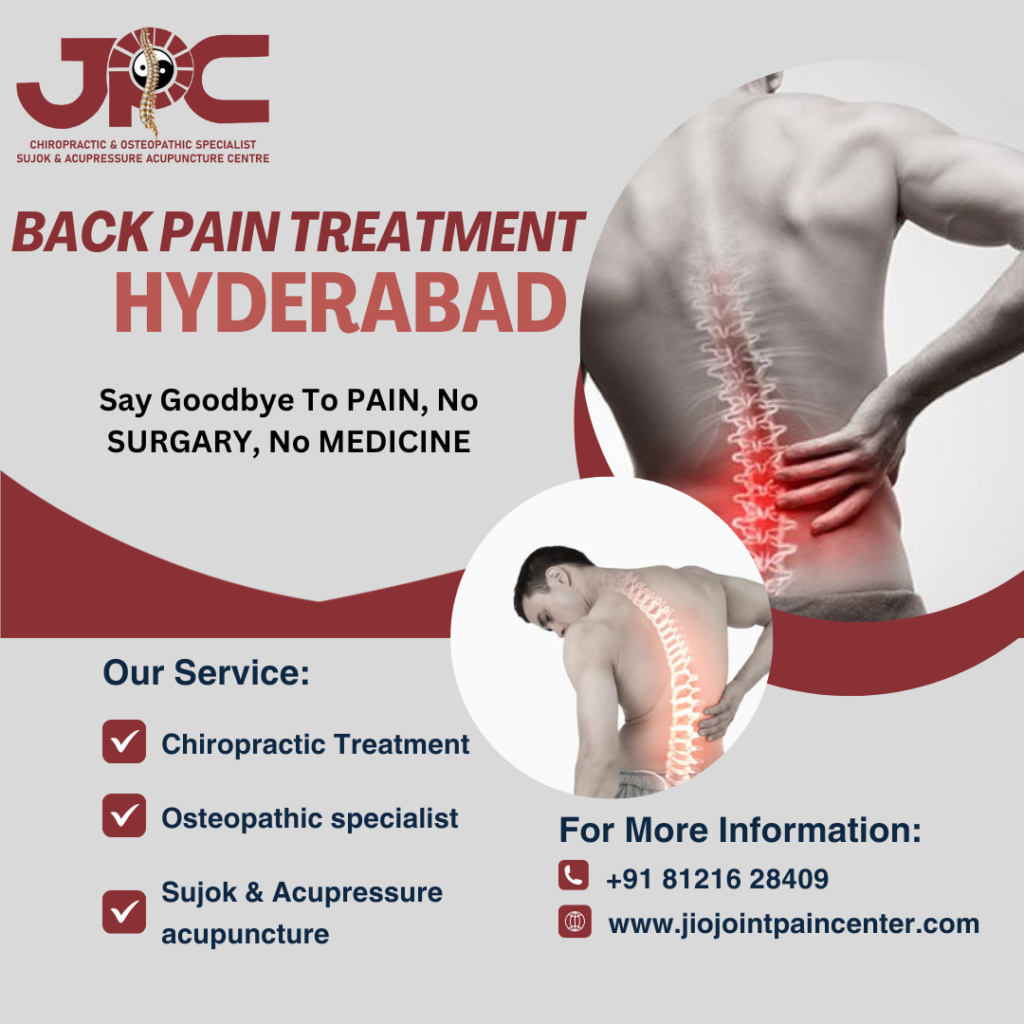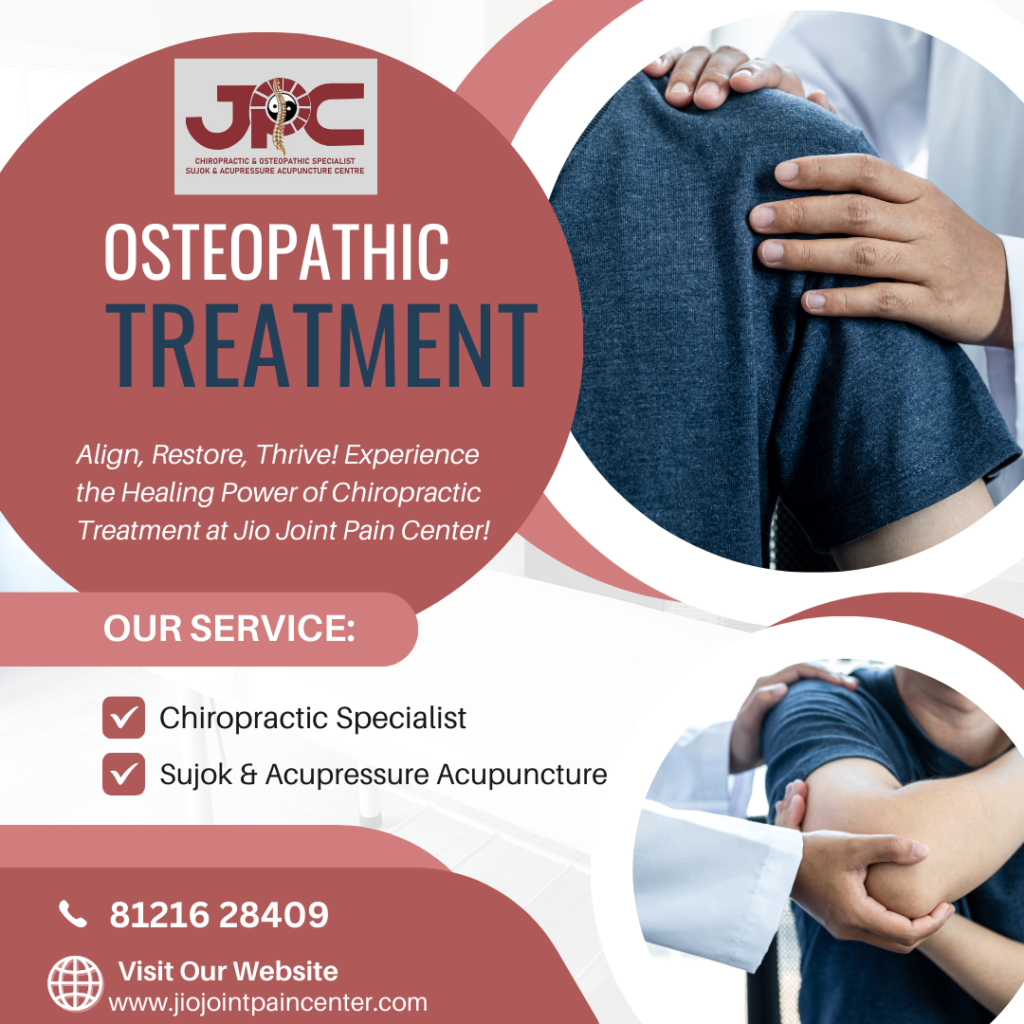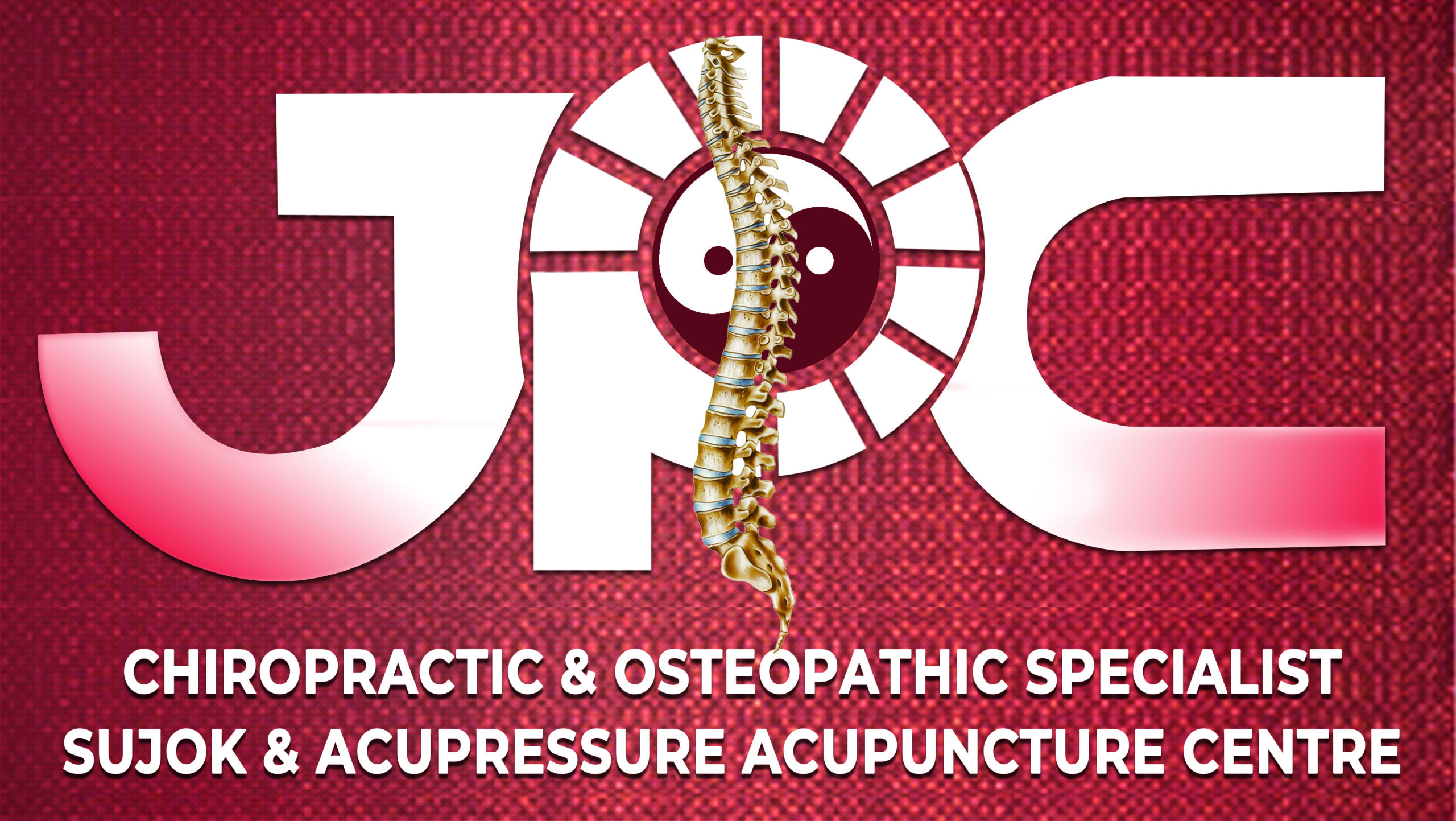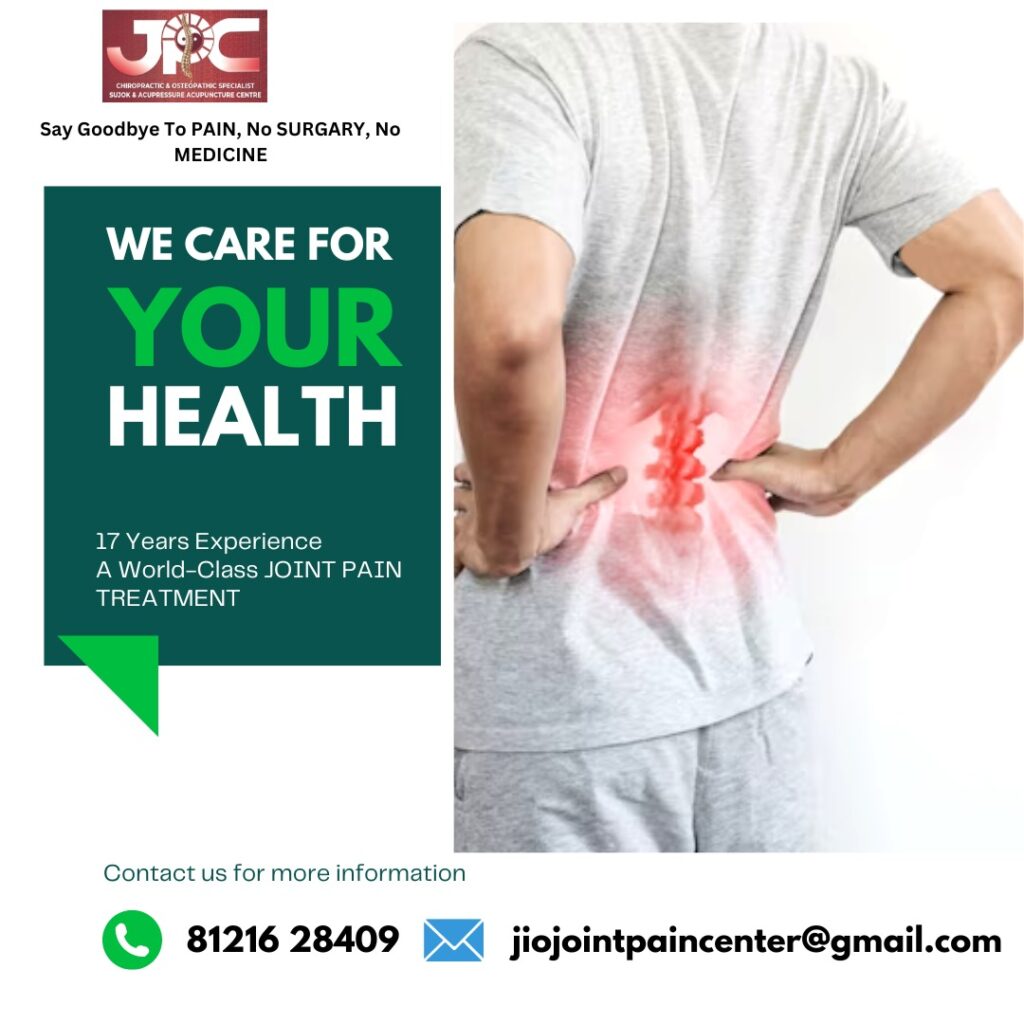In the bustling city of Hyderabad, where the demands of modern life often contribute to health challenges, the prevalence of back and joint pain is on the rise. Seeking alternatives to conventional medical treatments, individuals in the city are increasingly turning to holistic approaches for relief. In this blog, we explore non-invasive methods for back and joint pain treatment in Hyderabad.

Lower Back Pain Treatment in Hyderabad:
Lower back pain is a common complaint, often stemming from sedentary lifestyles, poor posture, or underlying musculoskeletal issues. In Hyderabad, individuals now have access to holistic approaches that go beyond conventional medical interventions. Physical therapy and exercise regimens tailored to address the root causes of lower back pain treatment in hyderabad are gaining popularity. Professional physiotherapists in Hyderabad work closely with patients to develop personalized exercise routines that strengthen the core, improve flexibility, and promote overall spinal health.
Furthermore, yoga and mindfulness practices are being embraced as effective tools for lower back pain management. These ancient disciplines not only address physical discomfort but also contribute to mental well-being, fostering a holistic approach to health and healing.
Joint Pain Treatment in Hyderabad:
Hyderabad residents seeking joint pain relief are exploring alternatives to medication-focused approaches. Traditional treatments often involve pharmaceuticals, but a growing number of individuals are turning to non-invasive methods that prioritize the body’s natural healing abilities.
Chiropractic care, a hands-on approach that focuses on the spine and musculoskeletal system, is gaining traction for joint pain treatment in Hyderabad. Skilled chiropractors employ gentle adjustments and manipulations to align the spine, alleviate pressure on joints, and reduce pain. This drug-free approach is particularly appealing to those seeking holistic solutions.
Acupuncture, rooted in ancient Chinese medicine, is another alternative gaining recognition in Hyderabad for its ability to address joint pain. By stimulating specific points on the body with thin needles, acupuncture promotes energy flow and facilitates the body’s natural healing processes. This holistic therapy is embraced by individuals seeking relief from joint pain.
 Hyderabad’s Thriving Wellness Centers:
Hyderabad’s Thriving Wellness Centers:
The city is home to numerous wellness centers that offer a range of non-invasive treatments for back and joint pain. These centers provide a blend of physiotherapy, chiropractic care, acupuncture, and lifestyle modifications, offering a holistic and personalized approach to pain management.
The emphasis on patient education is a hallmark of these wellness centers, empowering individuals to actively participate in their healing journey. Techniques for improving posture, incorporating ergonomic practices into daily life, and adopting healthy lifestyle habits are integral components of the holistic approach to back and joint pain treatment in Hyderabad.
Conclusion:
As Hyderabad continues to evolve as a hub of holistic healthcare, individuals grappling with back and joint pain are discovering effective alternatives to traditional medical interventions. With a focus on non-invasive treatments, lifestyle modifications, and holistic well-being, the city’s residents have the opportunity to take control of their health and experience lasting relief from back and joint pain.








